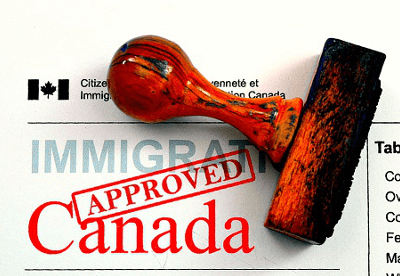How to Get a Work Permit in Canada
Overview of Work Permits in Canada
The process of obtaining a Canadian work permit starts with understanding the broad definition of “work” under immigration regulations. Essentially any paid activity that could compete with Canadian citizens or permanent residents requires a work permit. These permits are always temporary, but do provide a pathway to permanent residence.
Generally, a Labour Market Impact Assessment (LMIA) is needed to show hiring a foreign worker will not negatively affect Canadians. But some situations allow for LMIA-exempt work permits. This article will break down the step-by-step process to get a temporary Canadian work permit.
When a Labour Market Impact Assessment (LMIA) is Required
Canadian work permits fall into two categories – either needing an LMIA or being LMIA-exempt.
A Labour Market Impact Assessment is required in cases where the government must assess the impact of hiring a foreign worker on Canadian jobs.
Understanding Labour Market Impact Assessments
An LMIA determines if a Canadian employer can hire a foreign worker without affecting domestic employment opportunities. It is issued by Employment and Social Development Canada (ESDC).
A positive LMIA means ESDC has determined there are no Canadian citizens/permanent residents available for the job. This allows the employer to extend a job offer and foreign national to get a work permit.
A negative LMIA means ESDC found the hiring could negatively impact Canadians. In this case, a work permit cannot be obtained.
Obtaining LMIAs and CAQs for Work in Quebec
If the job offer is based in Quebec, the worker must also get a Certificat d’acceptation du Québec (CAQ) to work there temporarily. The CAQ application is submitted to Quebec’s immigration ministry simultaneously with the LMIA.
Some jobs in Quebec have streamlined LMIA processing, not needing recruitment evidence.
When an LMIA is Not Required
Certain situations allow foreign nationals to receive a work permit without an LMIA. These categories include:
LMIA-Exempt Work Permits
- Trade agreements like NAFTA or CETA
- Significant cultural/economic benefits for Canada
- Reciprocal exchange programs
- Allowing international students on co-ops
- Spouses of some work permit holders
- Charitable or religious work
- Refugee claimants needing income
- Certain permanent resident applicants
Temporary Job Offer from Employer
Once an LMIA is approved, the Canadian employer gives the foreign worker:
Required Documents
- Copy of positive LMIA letter
- Formal job offer letter
- CAQ if working in Quebec
These are needed for the work permit application.
Applying for a Canadian Work Permit
With the LMIA approval and job offer documentation, the foreign national can now:
Documents Needed
- Positive LMIA letter
- Job offer letter
- CAQ if in Quebec
Submitting the Application
Submit a work permit application to Immigration, Refugees and Citizenship Canada (IRCC). Some countries may require a temporary resident visa to enter Canada, so the application may need to be submitted at a visa office abroad.
Work Permit Issuance and Conditions
Permit Duration
Issued upon arrival by border services, work permits typically range from a few days up to a few years maximum duration. Extensions may be possible from within Canada.
Employer Specificity
Most Canadian work permits tie the worker to one specific employer and job. To change either, they need to obtain a new permit first. Open work permits not tied to any single employer are possible in limited situations.
Pathways to Permanent Residence
Though always temporary, a work permit can provide a pathway to permanent residence if the worker qualifies through:
Canadian Experience Class
This program is for skilled temporary workers with Canadian work experience.
Provincial Nominee Programs
Some provinces have immigration streams for temporary workers.
FAQs
Q1: How long can a Canadian work permit last?
A: Work permits typically range from a few days up to a maximum of a few years. Many can be extended within Canada.
Q2: Can you change jobs on a work permit?
A: Most Canadian work permits tie you to one employer. To change jobs, you need to get a new work permit first.
Q3: What options exist after a work permit?
A: A temporary work permit can lead to permanent residence if you are eligible through programs like Canadian Experience Class.
Q4: What is an LMIA in the work permit process?
A: A Labour Market Impact Assessment determines if hiring a foreign worker will affect Canadian job opportunities. It’s needed in many work permit cases.
Q5: How long does it take to get a Canadian work permit?
A: Work permit processing times vary greatly by situation. Some may take weeks while others can take many months to process. Checking current IRCC service standards will give you an idea of timelines.

